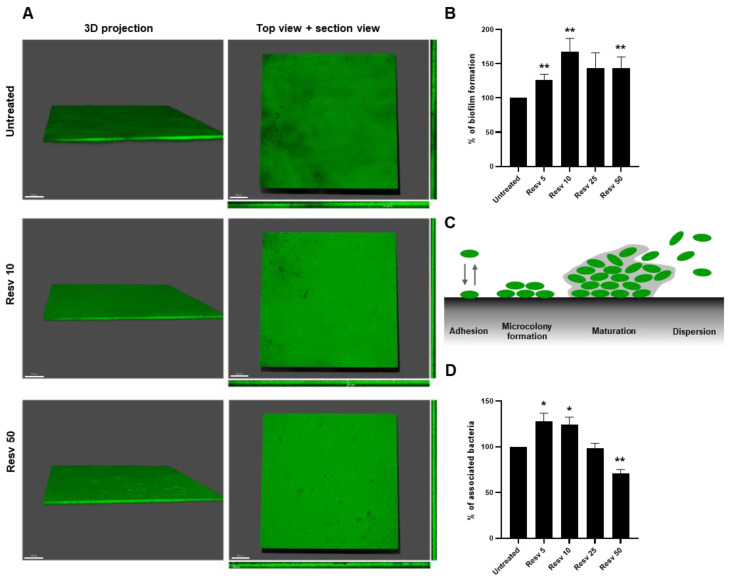Figure 2.
Resveratrol increased the biofilm formation by L. paracasei ATCC334 by enhancing its adhesion ability. (A) Confocal microscopy images of the biofilm formed by L. paracasei grown for 24 h in MRS medium alone (untreated) or in the presence of 10 µM (Resv 10) or 50 µM Resveratrol (Resv 50). The cells in the biofilms were stained with SYTO 9. 3D projections, top and section views are shown. (B) Biofilm formation was measured on a mucin-coated polystyrene support by enumeration on MRS agar plates. L. paracasei was cultured for 24 h in the absence (untreated) or presence of increasing doses of Resveratrol, from 5 µM (Resv 5) to 50 µM (Resv 50). Data are expressed as mean percentage ± SEM of biofilm formation of at least three independent experiments, taken untreated bacteria value as 100%. ** p < 0.01 (versus untreated). (C) Schematic representation of biofilm formation stages. (D) Adhesion of L. paracasei to a mucin-coated polystyrene support after a 1 h incubation in the absence (untreated) or presence of increasing doses of Resveratrol, from 5 µM (Resv 5) to 50 µM (Resv 50). Adherent cells were enumerated on MRS agar plates and results are expressed as mean percentage ± SEM of associated bacteria of at least three independent experiments, taken untreated bacteria value as 100%. * p < 0.05, ** p < 0.01 (versus untreated).

